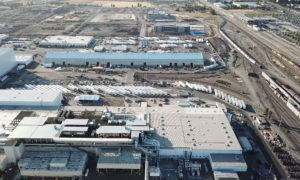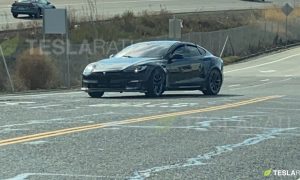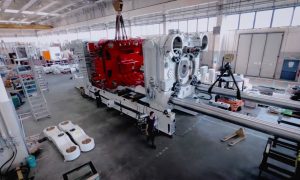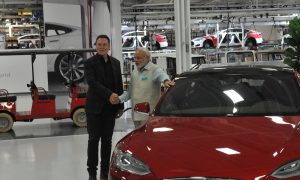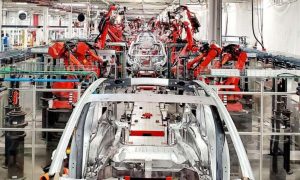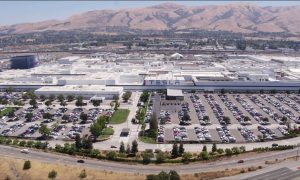News
Factory Robots Give Tesla Model X its “Backbone” (Video)
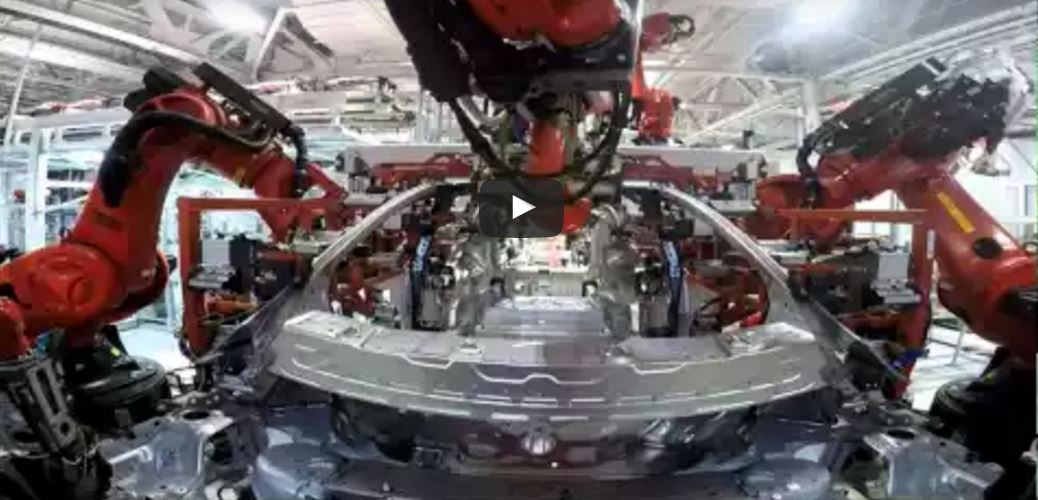
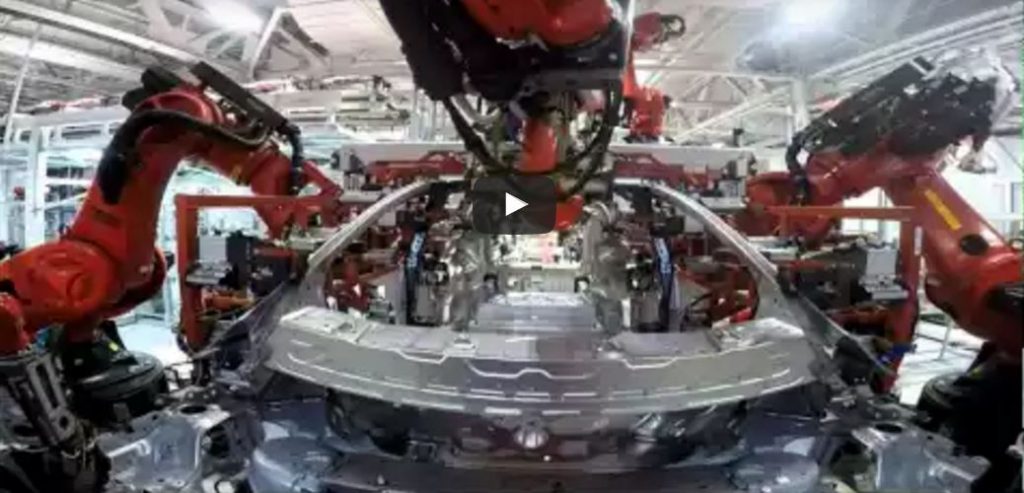
Tesla tweeted a short teaser video it calls “Team of robots gives Model X its backbone.” It’s not that unusual now to see a swarm of robots hovering over a collection of aluminum stampings and turning them into a car at the Fremont factory. What is unusual is how this video provides a glimpse of the structural components in the roof of the car that the falcon wing doors attach to.
Figuring out how to make a central spine strong enough to support the doors but narrow enough for the task was a critical engineering problem. That backbone is the item that will determine whether those doors continue to operate properly as the miles and years go by.
The falcon wing doors were one of the challenges that delayed the introduction of the Model X for almost 2 years. Getting the attachment point right was just the beginning. Tesla chose Hoerbiger Automotive Comfort Systems to design and build the operating system for the doors, but after more than a year, the firm was unable to meet Tesla’s engineering standards. In the end, Tesla abrogated its contract with Hoerbiger and designed its own system in house. The two companies are now involved in litigation.
The original system was supposed to be hydraulic. The fact that the doors are hinged at the top and again in the middle made the operating system an engineering nightmare. Prototypes continuously overheated in testing or leaked hydraulic fluid.
After the Model X was launched, Elon admitted he might have been guilty of letting hubris get in the way. He said Tesla should have just brought the car to market and introduced upgrades later. The X is brimming with novel technology, from the panoramic front windshield to the unique monopost second row seats. Getting all those unique parts into production was a daunting task.
Lack of parts for the assembly line was the primary reason Tesla could only build a few hundred cars until recently. Supply issues have since been alleviated and weekly production is up to around 750 units. Tesla has discovered a problem with the folding mechanism of the third row seats, but so far no issues with the falcon wing doors have been reported. Credit the car’s critical central backbone seen in this video for that.
Photo credit: Tesla Motors via YouTube
Elon Musk
Tesla Full Self-Driving gets full unhinged review from Joe Rogan
Joe Rogan recently said Tesla Full Self-Driving is “f***ing insane”
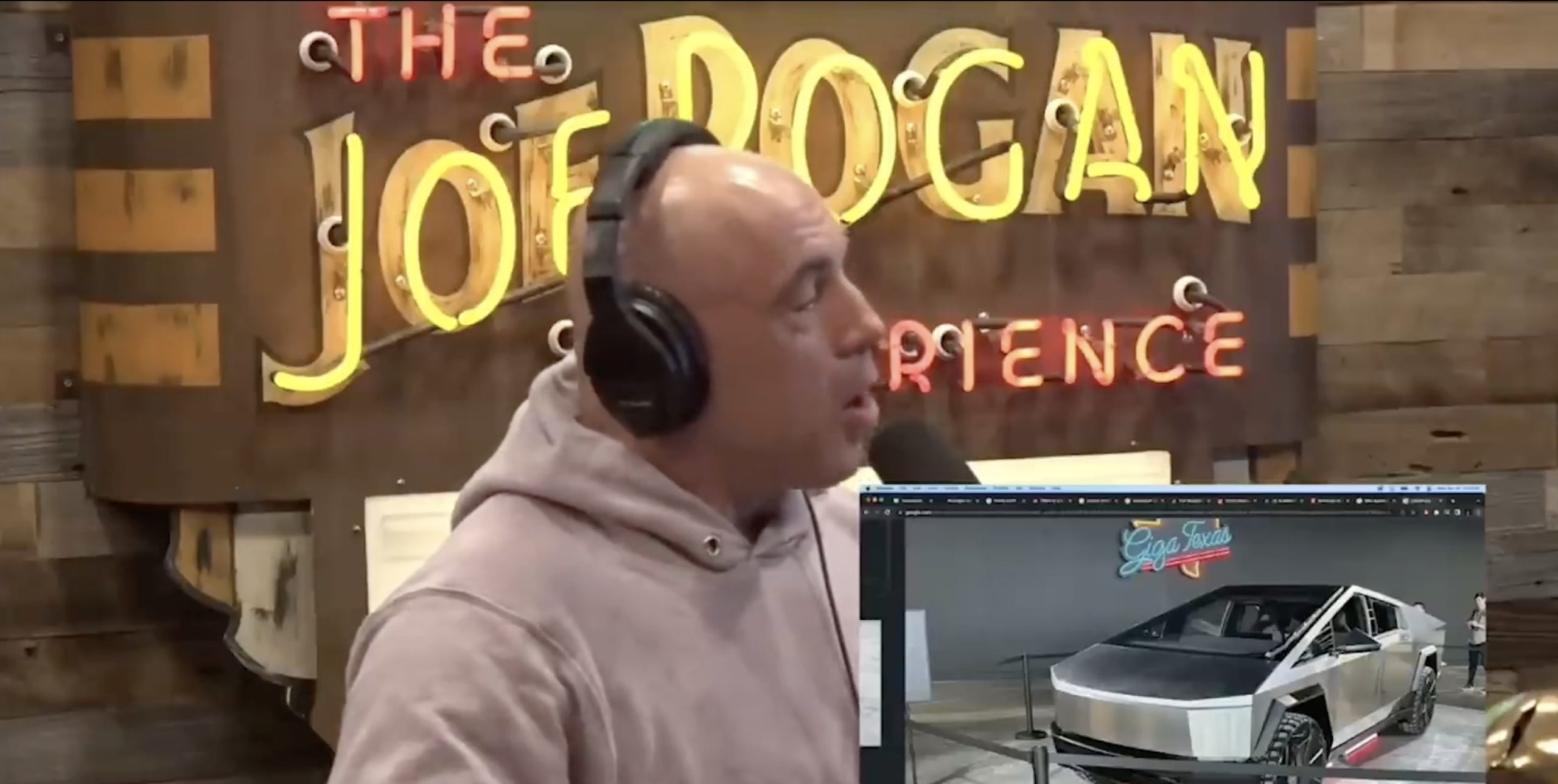
Tesla, and certainly its CEO, Elon Musk, both have a fan in Joe Rogan, but his recent comments about the company’s Full Self-Driving suite could potentially be the most notable yet.
Rogan is a massive fan of Musk and has had him on his podcast more than five times. Perhaps some of the coolest Tesla details have been revealed on the Joe Rogan Experience, and it has resulted in the UFC commentator and podcaster purchasing several Teslas, including a completely decked-out Model S Plaid.
However, Rogan recently gave his two cents on the Full Self-Driving suite, which is among the most robust Advanced Driver Assistance Systems (ADAS) in the world, and many people will be happy to hear what he said.
Rogan posted on X:
“I had my Tesla Model S drive me home the other day with FSD, and it’s f**king wild. Changes lanes to avoid slow traffic, stops at red lights and stop signs, hits the blinkers, and turns for you. It’s bananas.”
I had my Tesla model S drive me home the other day with FSD, and it’s fucking wild. Changes lanes to avoid slow traffic, stops at red lights and stop signs, hits the blinkers and turns for you. It’s bananas. https://t.co/Ir8dU9Zopg
— Joe Rogan (@joerogan) April 15, 2025
The FSD suite is not fully autonomous, as it still requires the operator’s attention, but it is a hands-free driving suite. As it has become more advanced, Tesla has allowed drivers to keep their hands off the wheel as long as they pay attention. Their eyes are tracked with a cabin-facing camera that ensures they are paying attention and ready to take over at any time.
In the past months, the FSD suite has continued to be refined, and new versions have been released to the public. In fact, Tesla has become so confident in its abilities, it recently opened up its Early Access Program (EAP) to more owners, allowing them to experience more advanced software releases before they are given to those who either have a subscription or have purchased the FSD suite.
Rogan’s comments reflect those of many other Tesla owners. In our twice-weekly X Spaces, we talk to many owners who state they have completely abandoned manual driving, and FSD is in operation for a vast majority of their drive.
Tesla plans to launch a robotaxi ride-hailing service in Austin in June, and it could be brought to even more cities by the time the year ends, as discussions with California are also in the works.
Elon Musk
Tesla reportedly suspended Cybercab and Semi parts order amid tariff war: Reuters
A new report claims Tesla is suspending the order of some parts for the Cybercab and Semi from China due to tariffs.
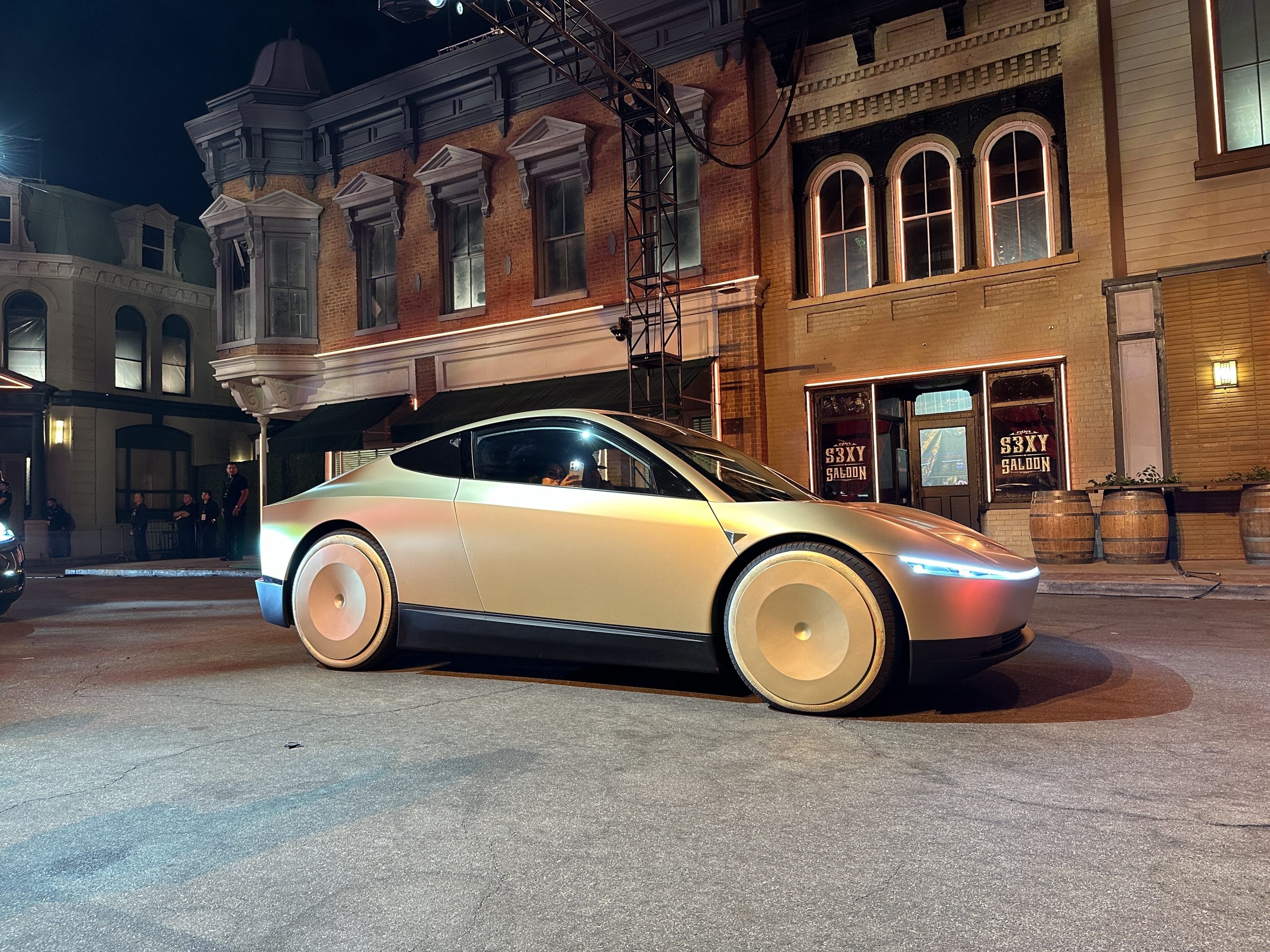
In a new report that cites people with “direct knowledge,” Tesla has apparently suspended a parts order for both the Cybercab and Semi that was set to come from China as a result of the tariff war between the country and the U.S.
Reuters reported this morning that the move was made as the 34 percent tariff on Chinese goods was raised to 145 percent. The report states that Tesla was “ready to absorb the additional costs when Trump imposed the 34 percent tariff on Chinese goods, but could not do so when the tariff went beyond that.”
This left Tesla in a situation where it had to make a decision, and ultimately chose to suspend shipping plans as a result.
Tesla, nor its CEO, Elon Musk, has responded to the report, so it is not known whether it has been confirmed. Tesla does not have a dedicated press relations division.
However, if it is true, Tesla would likely feel some repercussions from the parts delay for Cybercab, which it planned to launch in June with the start of a robotaxi ride-hailing platform in the City of Austin.
It is worth mentioning that this will not derail the plans completely, as the Model 3 and Model Y were also targeted to be a part of this initial rollout.
As far as the Semi, volume production is set to begin in early 2026. The first builds of the Semi’s high-volume design are slated to roll off production lines in Nevada late this year.
First Tesla Semi high-volume production builds expected this 2025
Tesla has responded to the tariffs in several ways, including halting the delivery of its Model S and Model X vehicles in China as the country imposed a 125 percent tariff as a retaliation against the United States.
It is no secret that Tesla is being impacted by the tariff situation, and Musk has been transparent about that. However, it is unknown whether it will begin to impact the company’s future projects, like the Semi and Cybercab.
Elon Musk
Tesla continues California domination despite slide in registrations
Tesla lost some of its market share in California but it still has a commanding lead.
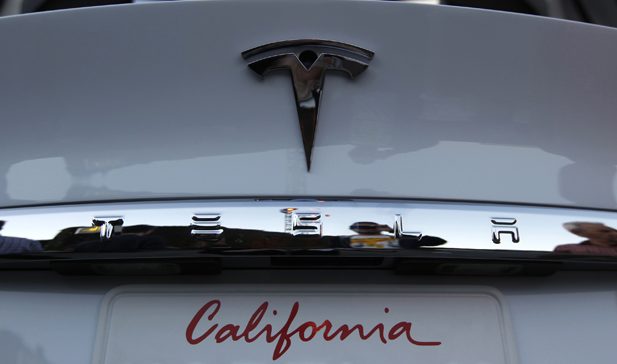
Tesla has continued its domination in the California auto market as the state’s New Car Dealers Association (CNCDA) has released data from the first quarter of 2025.
2025 is going to be one of the more difficult years to determine the outlook of the automotive sector due to the uncertain impact of tariffs and how much they will hinder overall growth.
However, we can break Tesla’s situation down a little further and explain why there were some Year-over-Year declines in registrations in California.
As a whole, Tesla registered 42,322 vehicles year-to-date through March, data from the CNCDA’s report shows. This is a 15.1 percent decrease from the 49,857 cars that had been registered by owners in the same time frame last year.
Tesla still owns 43.9 percent of the overall Zero Emissions Vehicles (ZEV) segment in California, down from 55.5 percent at this point last year. It is a decrease, but there is more to it.
The Top 25 BEV and PHEV models are led by the Model Y and Model 3, which counted 23,314 and 13,992 registrations, respectively. The third-place vehicle is the Honda Prologue with 4,493 registrations. The Tesla Cybertruck landed in 8th place with 2,282 registrations, and the Model X was 13th with 1,800.
The same quarter last year saw roughly 10,000 more registrations for the Model Y than this year, as Q1’24 saw the all-electric crossover accumulate 33,467 registrations. The decrease is due to Tesla’s switchover of production lines to the new Model Y build. Tesla said in its quarterly delivery report that it lost “several weeks” of production due to this changeover.
Tesla dominates in California but EV growth is the true winner
Interestingly, the Model 3 performed better than last year, as it only had 11,162 registrations through the same period in 2024. It had 13,992 registrations in California this year.
The question regarding Elon Musk’s political involvement and its impact on Tesla’s sales figures remains. Without surveying them individually, there is no way of knowing exactly how many people chose to go with another EV maker’s vehicle due to the politics. However, the Model 3’s slight bump is an encouraging look: it’s not all gloom and doom.
The CNCDA writes:
“Tesla’s troubles continue to worsen as Californians are giving the cold shoulder to the direct-to-consumer automaker (and controversial owner, Elon Musk). Registrations show a massive decline of 15.1 percent through March vs. this time last year. A year and a half of continuous quarterly declines proves this downward trajectory for Tesla is a lasting trend. The company’s market share also dropped by 11.6 percent at the end of Q1, now holding less than half of the California Zero Emission Vehicle (ZEV) market for the year.”
Most importantly, Tesla outpaced every other EV maker’s registration figures by a considerable margin, despite many analysts stating that there is irreparable brand damage.
Tesla had 42,322 registrations in California in Q1, significantly more than second-place Ford, which had 5,819 ZEV registrations in the Golden State through the first three months.
Despite what many are stating regarding Tesla’s “brand damage,” the company is still in control of the market substantially. It was always expected that Tesla’s market share, which sits at 43.9 percent, would fall slightly each quarter after more automakers had EVs to offer.
However, the company’s control still remains, at least for now.
-
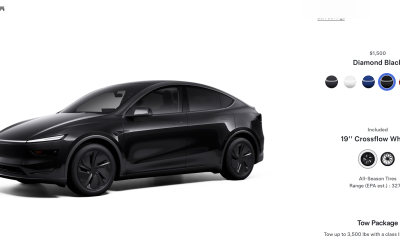
 News2 weeks ago
News2 weeks agoTesla rolls out new, more affordable trim of the Model Y Juniper in U.S.
-

 News2 weeks ago
News2 weeks agoTesla shares Optimus’ improved walk in new update video
-

 Elon Musk2 weeks ago
Elon Musk2 weeks agoTesla Germany reports 4,935 units sold in Q1 2025
-
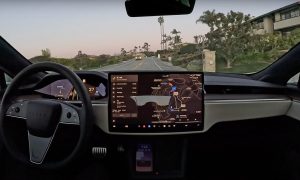
 News2 weeks ago
News2 weeks agoTesla expands Early Access Program (EAP) for early Full Self-Driving testing
-
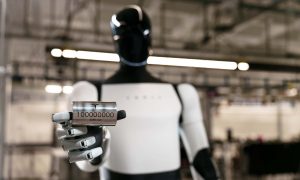
 News1 week ago
News1 week agoTesla celebrates key milestone for 4680 battery cell production cost
-

 News2 weeks ago
News2 weeks agoElon Musk will continue as DOGE adviser: VP Vance
-
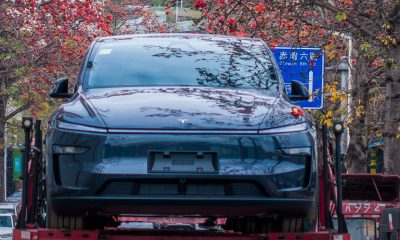
 News2 weeks ago
News2 weeks agoWells Fargo reiterates Tesla (TSLA) price target of $130
-
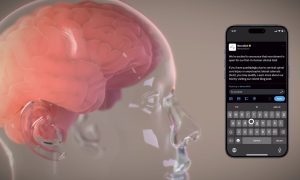
 Elon Musk2 weeks ago
Elon Musk2 weeks agoNeuralink’s Patient Registry is now open globally

